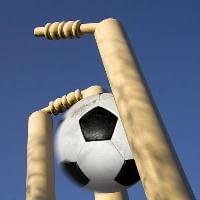The Sidek brothers are legendary in Malaysian badminton circles. This is because they are credited with steering Malaysian badminton in the right direction after years of failures and under-performance.
All this began with Sidek Abdullah Kamar, their father; an avid fan of the sport who began training his sons in badminton at a very early age. The five brothers all became world-class players, quite an achievement in itself, and won medals in all major international competitions, including the prestigious All England Championships, the Olympics and the World Cup.
The crowning glory of their ascent arrived when Malaysia clinched the 1992 Thomas Cup, a fitting tribute on a fitting stage as a Kuala Lumpur hosted the premier world team competition that year. The Sideks remain a prestigious badminton family with Abdullah Kamar's grandson Misbun Rahman Misbun continuing to play on the world stage.
This story specifically deals with one of the greatest players of this unique family, Misbun Sidek, and how his clever invention led to wholesale changes in the rules of the racquet sport. Misbun had earned many laurels for his country, both as a player and a coach. This includes two Swedish Open and one German Open triumphs as a player. He was also a part of the coaching staff when Malaysia lifted the Thomas Cup title in 1992 after a drought of 25 years.
Misbun had also won the silver medal in the World Cup and the All-England Championships and was one of the top players in the world in the early '80s. He hung up his boots relatively early at the age of 29 but his coaching career has gone from strength to strength from that point. Since 2017 he has been the head coach of the Malaysia national singles' team.
It was evident from an early age that Misbun had a sharp badminton brain and this in time led to the invention of the infamous S-serve. Some apocryphal stories speak about how the Chinese, including Tang Xinhu, used it the mid '70s, but it was clearly the Sidek brothers, led by Misbun, who used it to devastating effect in the late '70s and early '80s.
Some commentators even argue that the Sideks owed their unprecedented success during this period to the use of the S-serve. Suddenly, the badminton world had been hit by a storm. Favorites were falling by the wayside as this new serve meant the server went on getting one point after the other and opponents had no answer.
Even the Chinese and the Indonesians picked up the skill later and the badminton world, it seemed, was divided into two halves, one which knew the S-serve and the other, which didn't.
So what is the S-serve? Well, as against hitting the shuttle at the base as is normally done for momentum, one primarily hits the feathers directly after holding it in an inverted manner. It is similar in technique to table tennis serves with the server slicing across the feather, imparting spin and a tumbling, unpredictable effect that led to the shuttle behaving viciously, sometimes dropping sharply, other times spinning uncontrollably; often making it impossible for the returner to get it to the other side of the net.
The side-spin meant even if one connected properly, the shuttle moved erratically and the server dominating the proceedings. Things came to a head in the early 1980s with English and Danish players demanding a ban on this serve. However, by this time the Chinese had mastered the technique and they were in favor of the S-serve. Things were put to a vote by the world body but a 2/3rd majority wasn't secured, hence the serve remained legal.
The Sideks won the doubles crown at the 1982 All England and the clamor against the S-serve continued to rise. On 1st July, the IBF finally deemed it illegal as experts considered it to be violating the double contact rule (the serve was brushing both feathers and the base simultaneously). A motion was brought in again and the S-serve was voted against 91-1. Since then, one can only hit the base of the shuttle while serving in international tournaments.
The Sideks had, by then, reached the zenith of their individual achievements.
